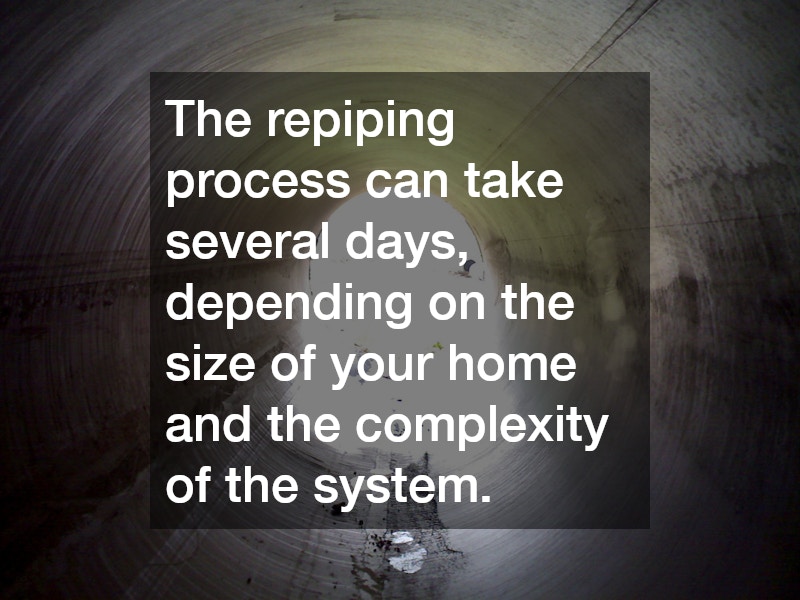If you live in an older home or have been experiencing frequent plumbing issues, it may be time to consider a home repiping. This process involves replacing all or most of the pipes in your home, ensuring that your plumbing system functions efficiently and safely. Although the idea of repiping your home might sound daunting, knowing what to expect during the appointment can help ease concerns and prepare you for the process. Here’s a guide to what typically happens during a home repiping project.
1. Initial Consultation and Inspection
Before the actual repiping begins, a professional plumber will visit your home to conduct a thorough inspection. This step is crucial for evaluating the condition of your existing pipes, identifying problem areas, and determining the best approach for the repiping project. During this inspection, the plumber will assess factors like the type of material used in your current pipes, signs of corrosion, and any existing leaks or blockages.
This consultation also gives you the opportunity to discuss any concerns or specific issues you’ve been facing, such as low water pressure, discolored water, or frequent leaks. The plumber will then provide an estimate and explain the scope of the project, including how long it will take and the expected cost.
2. Preparation for the Repiping Process
Once the inspection is complete and you’ve agreed to move forward with the home repiping project, the next step is preparing your home for the work. Depending on the size of your home and the extent of the repiping required, this preparation may involve moving furniture, clearing access to the walls and floors where pipes are located, and covering areas to protect them from dust and debris.
In some cases, drywall may need to be cut to reach the pipes, particularly in areas like bathrooms and kitchens. Plumbers typically take care to minimize damage to your walls and floors, and they will explain which areas will be affected before the work begins. Many homeowners choose to combine a repiping project with other home improvements, such as a bathroom or kitchen remodel, to minimize disruption.
3. The Repiping Process
During the actual home repiping, the plumber will replace old, damaged, or outdated pipes with new ones. The materials used for the new pipes will depend on the specific needs of your home, with common options being copper, PEX (cross-linked polyethylene), or CPVC (chlorinated polyvinyl chloride). Each material has its advantages, and your plumber will recommend the best choice for your home’s water system.
The repiping process can take several days, depending on the size of your home and the complexity of the system. While the water supply may be temporarily shut off during the project, plumbers typically work in sections to minimize the amount of time your water is unavailable.
Although the thought of a home repiping project may seem overwhelming, understanding the steps involved can help you feel more prepared and confident throughout the process. From the initial inspection to the final cleanup, professional plumbers ensure that your home’s plumbing system is safe, efficient, and ready to provide reliable service for years to come.
.

